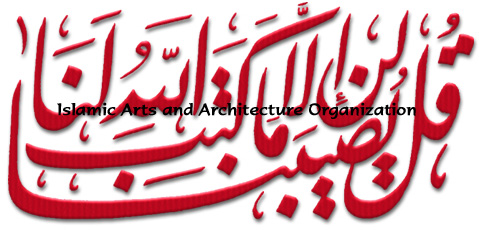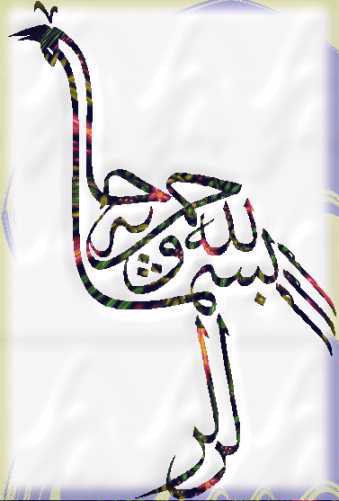
The above calligraphy is translated: "Say: Nothing will happen to us except what Allah has decreed for us: He is our Protector: and on Allah let the Believers put their trust." (Qur'an, Surah 9:51)
allahallahIn addition to demonstrating a love of abstraction, Islamic calligraphy has connections with mathematics. Every calligraphic work was designed using three initial measurements: the dot, the alif, and the imaginary circle formed from the alif. The dot is the shape made when the calligrapher gently pressed the reed pen onto the paper. The alif, the first letter of the alphabet, is a vertical stroke whose width is, of course, the same as the dot. Its height was crucial; the number of dots it was high served as the diameter of an imaginary circle. This circle was used to properly proportion all the other writing on the page or object being decorated.
allahallah Although there are many other Islamic arts that may be more well known, Islamic calligraphy represents the beginning of Islamic art. All the most important elements of later art were already present: abstraction, a love of symmetry and curves, and an awareness of proportion and mathematics. Despite concerns about representational art, much calligraphy suggested flowers or other shapes in the real world. For example, much calligraphy was "zoomorphic," shaped like animals:

allahallahIslamic calligraphy is not just an old, dead tradition: new styles are still being developed. One of the most recent is al-Khat al-Hurr which was developed in the 1980's. Let's move on to learn about the relationship between Islamic Art and Islam.